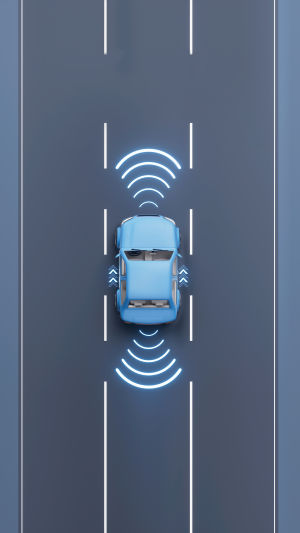Welcome, Lykkers! Today's vehicles are becoming increasingly intelligent, thanks to advanced driving technologies. Among the most discussed innovations are Autonomous Driving and Advanced Driver Assistance Systems (ADAS).
Although often confused, these are not the same. Each plays a distinct role in the evolution of transportation safety and convenience. This guide breaks down their differences, functions, and classifications to give a clear overview of how modern driving is changing.
<h3>What Are ADAS Systems?</h3>
<b>Driver Assistance for a Safer Experience</b>
ADAS refers to a range of technologies designed to enhance the safety and comfort of the driving experience. These systems assist the driver in various situations by increasing awareness and responsiveness to the surrounding environment.
<b>Examples of ADAS Features:</b>
- Parking Sensors: Help detect nearby obstacles during parking maneuvers.
- Blind Spot Monitoring: Alerts the driver when there are vehicles in adjacent lanes that may not be visible.
- Rearview Cameras: Provide a clear view behind the vehicle, replacing or supplementing traditional mirrors for a broader perspective.
These systems do not take control away from the driver but rather support their decisions and reactions, aiming to prevent accidents and make driving more manageable.
<h3>What Is Autonomous Driving?</h3>
Autonomous driving refers to the ability of a vehicle to operate without the need for active human input in certain conditions. To help the public understand the level of independence each system offers, a recognized international classification defines autonomous driving into six levels, from 0 to 5.
<h3>Level 0: No Automation</h3>
<b>Basic Alerts Only</b>
At this level, vehicles might include simple alert systems, such as lane departure warnings. However, they do not take any direct action. The driver must remain fully in control of all operations.
<h3>Level 1: Driver Assistance</h3>
<b>Support for One Driving Task</b>
Vehicles at this level include one form of assistance, such as lane keeping or adaptive cruise systems. While these features can manage speed or steering, they do not operate simultaneously, and the driver must stay engaged at all times.
<h3>Level 2: Partial Automation</h3>
<b>Combined Functions Under Supervision</b>
Here, the vehicle can manage both steering and acceleration/deceleration under specific conditions, such as highway travel. The system uses technologies like lane centering and adaptive distance control, adjusting to traffic flow.
Despite these capabilities, the driver must keep their hands on the steering wheel and be ready to intervene.
If the driver does not maintain contact with the wheel, the system may deactivate lane centering, emit increasing sound alerts, or even slow down the vehicle to a stop.
<h3>Level 3: Conditional Automation</h3>
<b>Hands-Off in Specific Scenarios</b>
Level 3 vehicles can handle all aspects of driving in limited environments, like slow-moving traffic under 60 km/h. Features like Traffic Jam Assist, which use sensors such as LiDAR, allow the vehicle to accelerate, steer, and decelerate.
While active driving is not required, the driver must remain ready to take control when prompted by the system.
<h3>Level 4: High Automation</h3>
<b>Fully Automated in Defined Areas</b>
At this level, the vehicle is capable of complete self-operation within designated zones or favorable environmental conditions. It does not require driver input during operation in those contexts. Vehicles such as robotic public shuttles or city-based automated taxis fall into this category.
These may not include traditional controls like pedals or a steering wheel.
<h3>Level 5: Full Automation</h3>
<b>Complete Independence From Human Input</b>
This is the highest classification, where vehicles can perform all driving tasks in any environment and under all conditions. Human involvement is unnecessary. The vehicle becomes a self-managed transport system where passengers are simply along for the ride.
<h3>Conclusion: Driving Into the Future with Confidence</h3>
For Lykkers who enjoy staying informed about the latest in smart technology, understanding the distinction between ADAS and autonomous driving is key to appreciating how vehicles are evolving.
ADAS enhances current vehicles by making them safer and easier to drive, while autonomous driving aims to eliminate the need for human input entirely. As technology progresses, these systems are setting new standards in safety, efficiency, and convenience.





